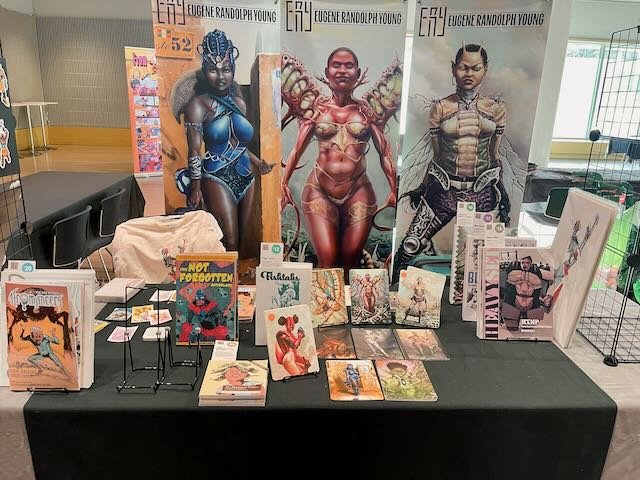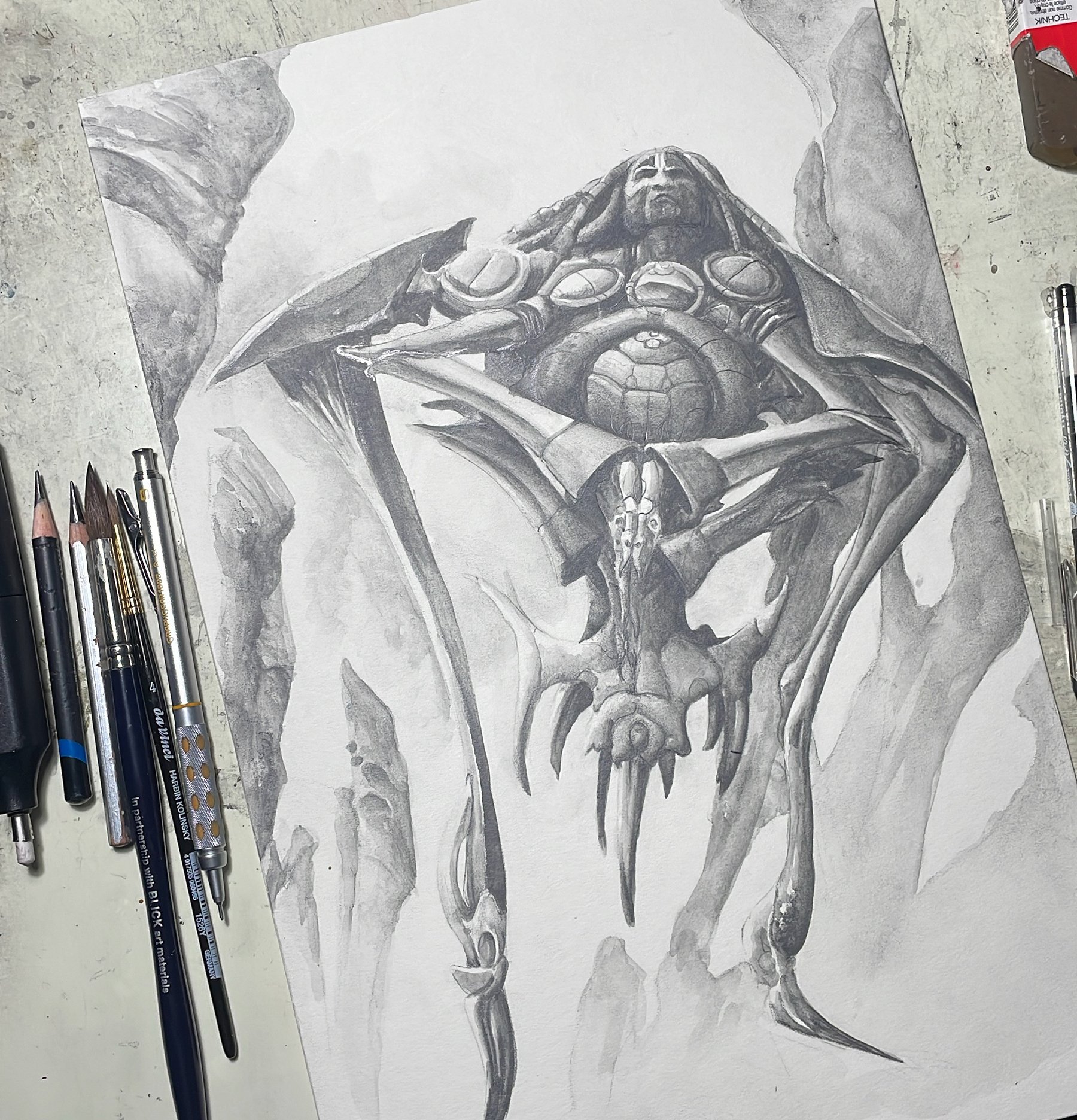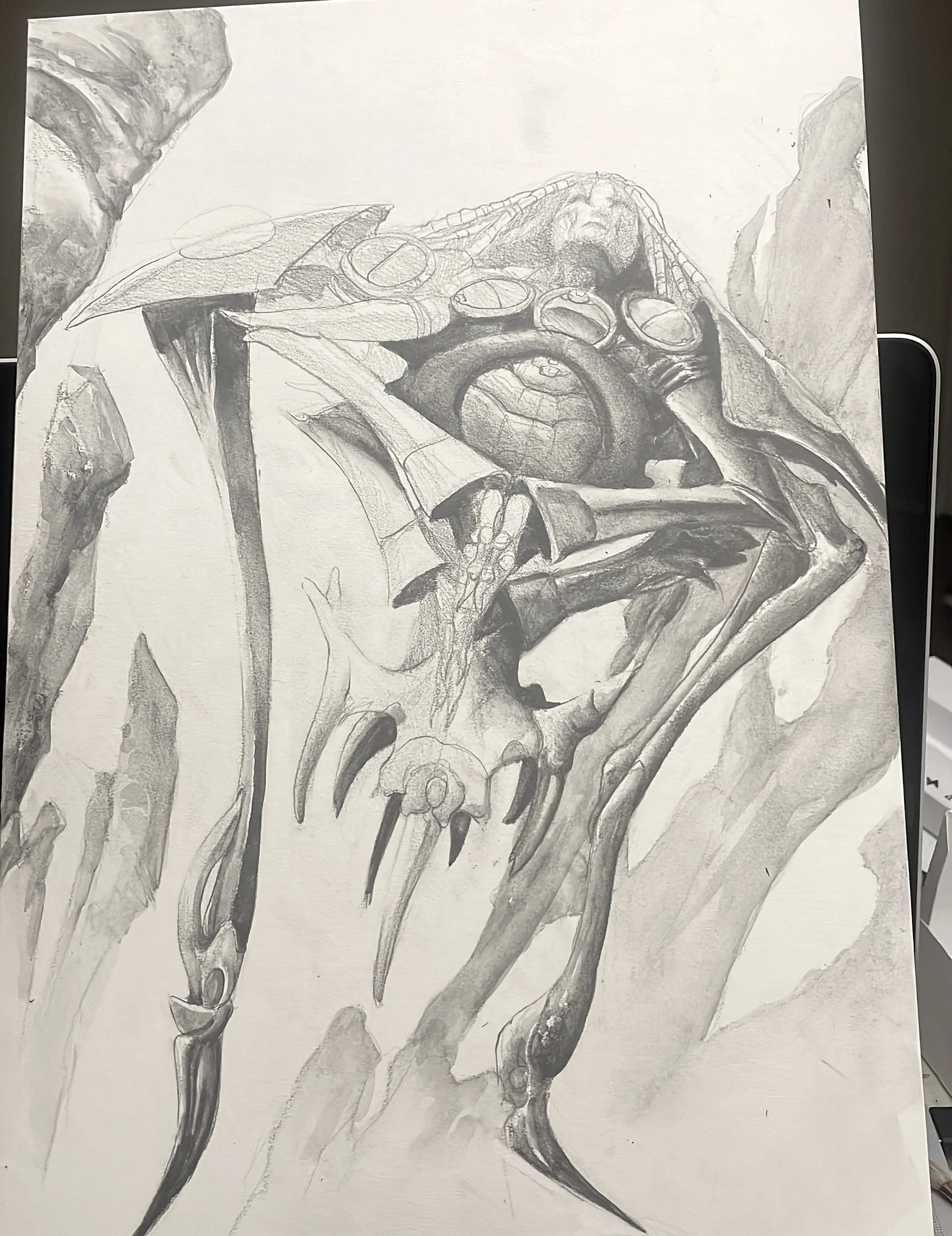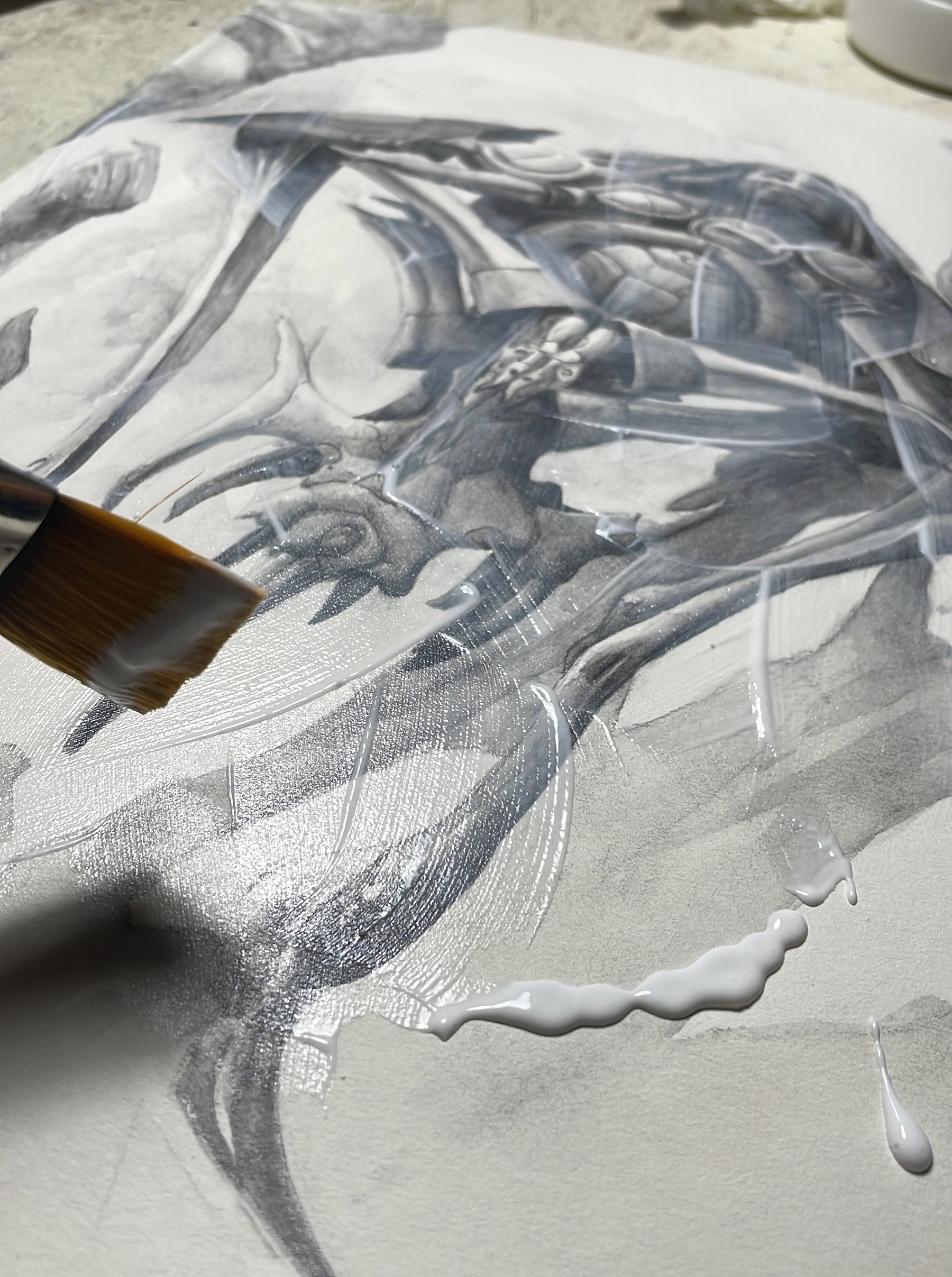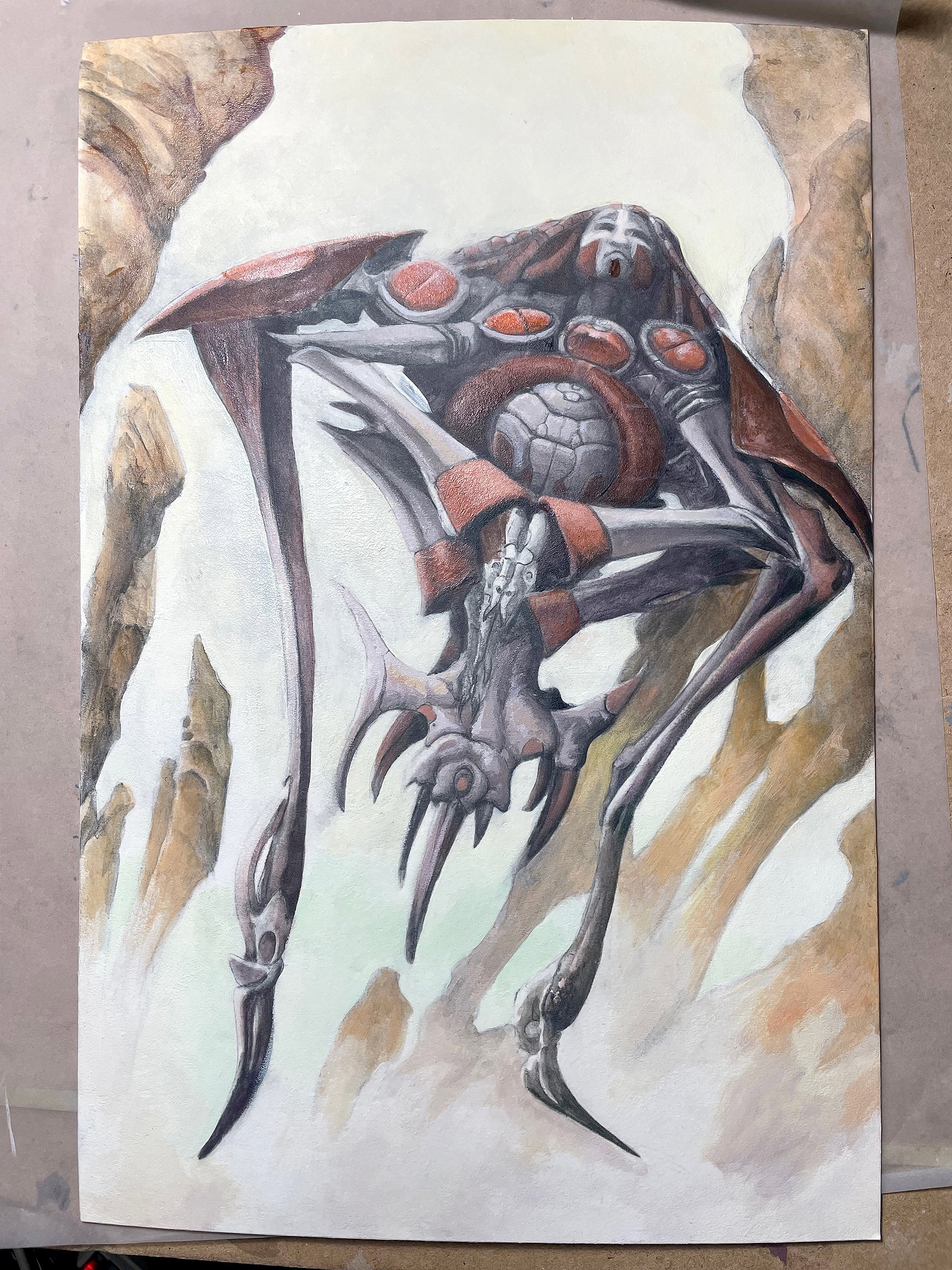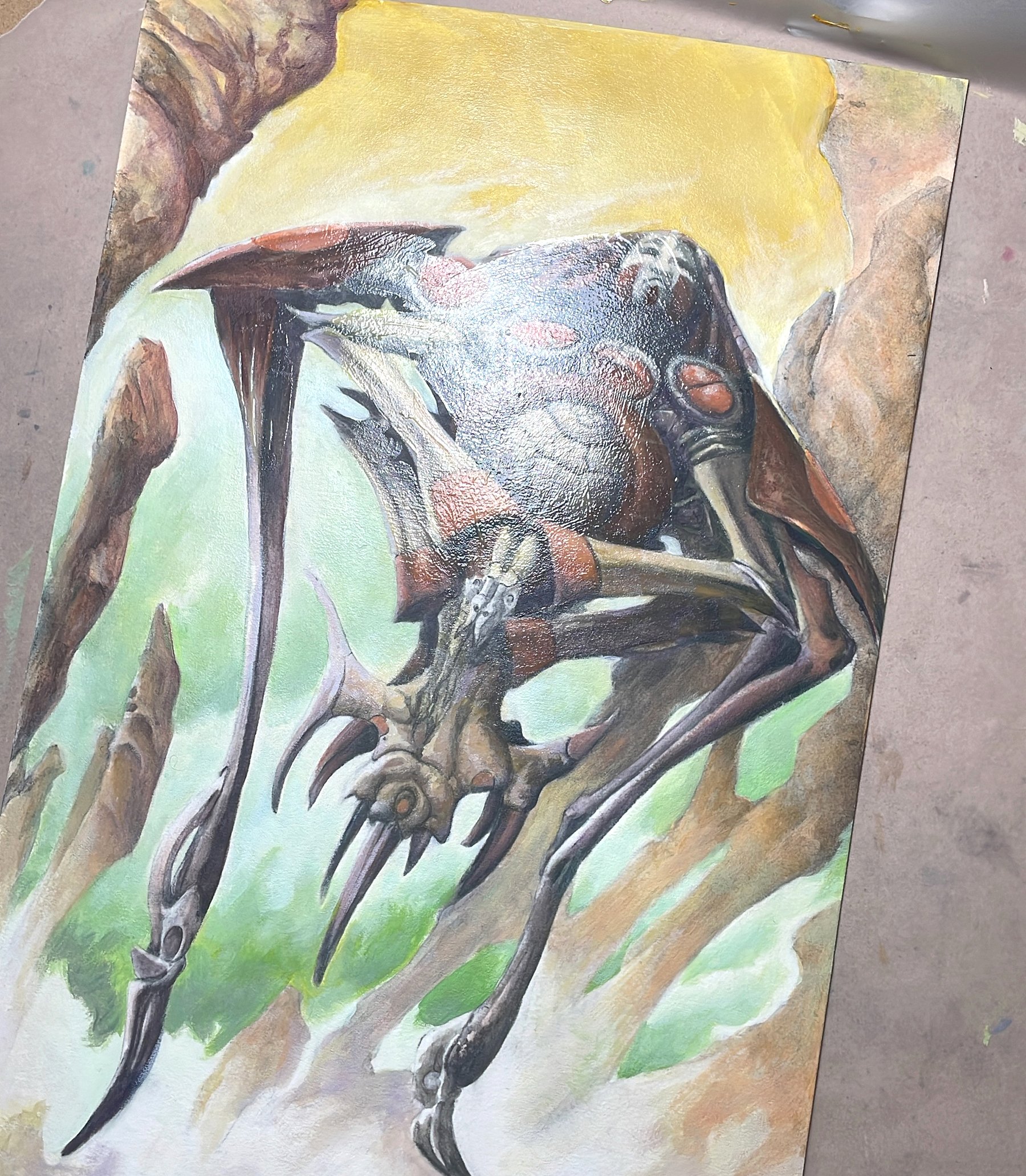The marketplace for year’s Black and Brown Comix Arts Festival took place on Sunday, January 19th and Monday, January 20th. Sunday was a slow day for tabling, but Monday was very well attended. A few additional vendors setup in the space as well. I want to thank everyone who stopped by my table. The interest in my work and generous support made the event well worth the investment of time and finances.
The Positives
One of my newest releases this year was the Blam!azons sketchbook which collects art originally slated for a Big Bad Becky coloring book series. The characters draw from several of my favorite 80s sci-fi pin-up artists these femme fatale artists such as Luis Royo, Chris Achilléos, Olivia de Berardinis, and Julie Bell to name a few.
As I mentioned in the previous post, this year also marked the first release of the Afromancers “comic “bookette”. This first issue, subtitled “The Nah’pii Files” catalogs the hair-based monsters that plagued the world of Knot during the Age of the Curlmonger. I went with more of a journal/sourcebook approach rather than traditional sequential art with balloons and captions. So, it’s not quite a comic book, and not quite a novel or novella. Hence the term “bookette”. In hindsight, maybe calling it a “sourcebook” would have sufficed. These days, I find myself wanting to see a higher word count in mainstream and independent comics. The influence of what I presume to be manga style of visual storytelling seems to be chipping away at the literary weight of mainstream and independent comics. I first noticed the trend toward pictures over words with superhero comics in the 90s. Back then, a lot of explosive eye candy was the order of the day that left me disappointed as a reader. Splash pages and chaotic panel designs took precedence over the written word. It was therefore disappointing when it took just a few minutes to “read” a comic.
Can BCAF Be Saved?
A few attendees expressed their concerns about the lack of communication via the BCAF website and social media pages. I was also in the dark about what was happening this year. Last year’s event was similarly under promoted, but there were at least a few moderated panels presenting on the main stage with seating. Vendors situated with their backs to the stage seemed not to hear when a panel was going, so they carried on with their conversations with potential customers. Naturally, the sound carried and detracted from the panel. I could see the frustration of one of the event organizers and emcees who at one point had to walk over and ask a couple of vendors to keep lower their voices.
With this being my fifth year of vending at BCAF, I’ve learned to be patient with the minor inconveniences and disappointments. Even with a staff of volunteers, the event has always been very DIY from setup to breakdown. Imagine having to not only find choose a spot but also lift and carry your table. Or, imagine volunteers who look past or avoid you when you approach them to ask a question. Experience has taught me not to let stuff like that ruin the experience. Instead, it’s best to stay focused on sharing my work and connecting with as many people as possible.
The independent artists at BCAF truly embody solutions to many of the problems around representation in the entertainment industry that continue to dominate discussions online and at your typical diversity panel. My mild frustration is that these discussions tend to rob creatives and their work of valuable time and exposure. And while I see plenty of value in discussions about culture, history exclusion, misrepresentation, and other grievances, I can only imagine impact of those same pundits and scholars talking about our work as well. In general, the oppression narratives tend to overshadow the actual achievements of black and brown artists and writers.
Moving forward I wonder,… could there be more focus on the creatives tabling at BCAF through the scheduled programming?

